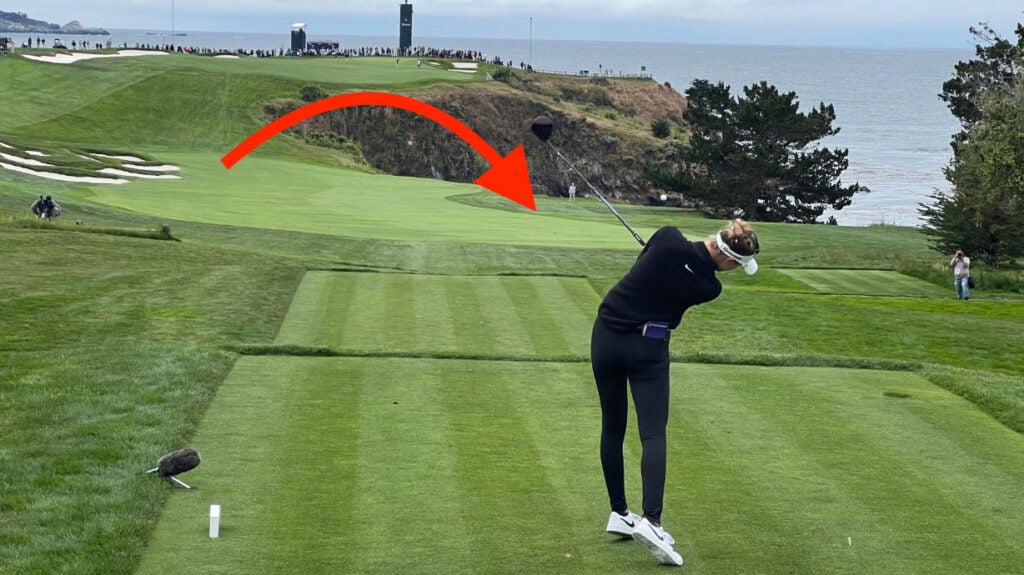Change is afoot at the AT&T Pebble Beach Pro-Am. The field is smaller (just 80 players, on account of the tournament enjoying “Signature” status for this year’s edition); the pro-am component of the event will be only two rounds as opposed to the traditional 54-hole or, for some, 72-hole affair; and the brand-name amateurs in the field are limited to athletes (Tom Brady, Aaron Rodgers, et al.), meaning no actors or gallery-rousing comedians, including staples like Ray Romano and Bill Murray.
“Honestly, it has a little less Bing Crosby to it,” Jordan Spieth said Wednesday, referring to the tournament’s heyday when Crosby served as the host. “It feels more like a major championship.”
And not just the vibe — the course setup, too.
Spieth said Pebble’s fairways are narrower than in years past, most notably on the par-5 6th hole, which runs hard against Stillwater Cove.
“The biggest change that’s extremely noticeable is No. 6,” Spieth said. “Even in the U.S. Open there was no rough down the right side, at least as far as I can remember, and it’s cut in quite a bit. If you miss the fairway to the right now, but you’re not in the hazard, you’re just in the right rough and you’ll have a pretty difficult decision trying to hit up that cliff or you lay it back.”
Spieth didn’t say whether he approved of the buffer, which was installed in advance of the U.S. Women’s Open at Pebble Beach last summer, but on X (formerly known as Twitter) the architecture sharpies at Fried Egg Golf characterized the ball-grabbing grass as “a painful neutering of the ocean and cliffs as the real hazard on one of the best par-5s in the world.”
Which drew this response from Tour pro Michael Kim, who is not in the field this week but has played in three other editions of the Pebble Beach Pro-Am, including an 11th-place finish a year ago: “My opinion but the only goal on that tee shot…is to hit the fairway and any piece of the fairway. No one is trying to find a different angle. With it being a blind shot and trying to hit it like 230, we’re only thinking fairway.” He added: “On this hole, I don’t see anyone taking on the risk of a penalty shot to give themselves 5-10 less yards. No one is trying to ‘attack’ that right flag. It’s way too narrow there. Ur just trying to hit the middle of the green on that hole, give yourself a 20ft.”
The choking of the 6th fairway didn’t happen overnight; its evolution has, in fact, been a century in the making.
In preparation for the 1929 U.S. Amateur at Pebble, Chandler Egan, a former U.S. Amateur winner, was tasked with tightening the screws on the links. Among the many changes he implemented was shifting the bunkers to the left of the 6th hole driving zone closer to the fairway. In 2016, Pebble made another tweak that complicated the tee shot, re-angling the tee box toward the cove to juice the fear factor. The course also beefed up the collection of left-side fairway bunkers.
Here’s how GOLF course rater Michael Pellicione described the tee shot in a 2020 essay for this site: “Standing on the tee high above the fairway, one might feel the urge to let your tee shot fly, but don’t be lulled into a false sense of security. Though the fairway is one of the widest on the course, you can’t just hit it anywhere. The left side is littered with bunkers to penalize those looking to bail out, while the right side is property of Stillwater Cove, which comes into play more readily than it appears. Simply put: don’t go right!”
Right should still be avoided, of course, but now players who do miss on that side have more hope of their balls not finding a watery grave. As the pressure mounts through the week and with wild and windy conditions forecast, the new-look tee shot at 6 will be one worth watching.
